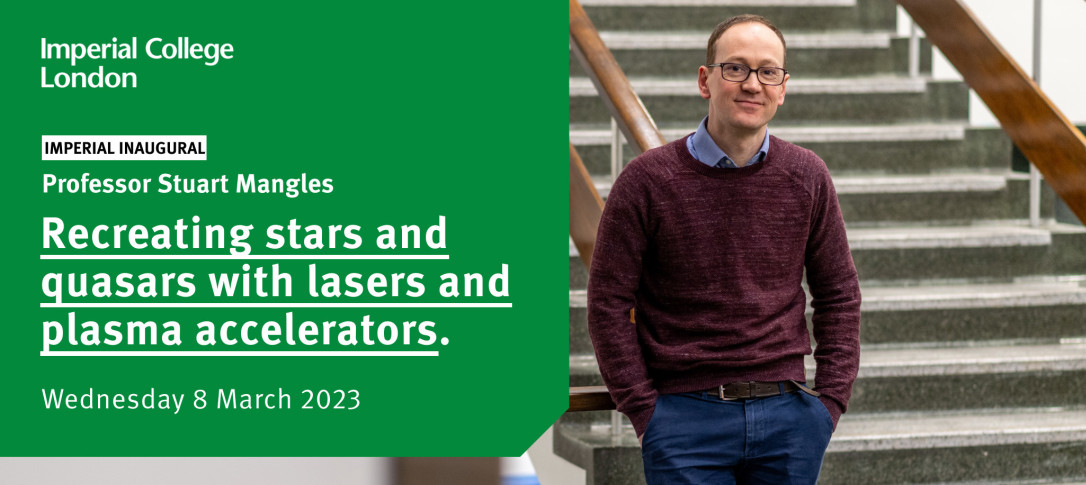
Join Professor Stuart Mangles, online or in person, for his Imperial Inaugural.
We have limited in-person spaces available so please ensure you register in advance.
Feel free to join us online
Link: https://youtube.com/live/Kfw2sq4HnGI
Abstract
Compared to some places in the Universe, the Earth is fairly boring: it’s pretty cold, not very dense, and the magnetic fields around us are rather weak. Scientists have a pretty good understanding of how matter behaves on Earth, but we don’t really understand how stuff behaves when it’s under the extreme conditions like those found in stars, quasars and near black holes.
We can create these extreme conditions in the lab here on Earth using some of the world’s most powerful lasers. But these experiments are challenging to study, in particular because we can only make the extreme conditions exist for a fleeting moment.
Stuart Mangles is Professor of Laser-Plasma Physics at Imperial College London where he works on laser-plasma accelerators to produce extremely short pulses of electrons, x-rays and gamma rays. In his inaugural lecture he will discuss how these techniques could prove a perfect tool for probing a range of extreme conditions produced in high power laser experiments.
Biography
In his research, Stuart uses intense laser-plasma interactions to create new kinds of compact particle accelerators and X-ray light sources, and exploits the unique properties of these sources to explore the physics of extreme conditions.
Particle accelerators are well known as important tools of scientific discovery, but they are large and expensive machines. The laser wakefield acceleration technique he researches now allows high-energy particle and X-ray beams to be produced in a university size laboratory. Using these accelerators he can now produce multi-GeV electron beams in a plasma accelerator just a few centimetres long (something which a conventional accelerator can only achieve in one hundred metres or more).
The unique properties of the beams that laser wakefield accelerators produce, together with their co-location and easy synchronization with other high-power laser sources, are now helping to drive a new generation of experiments. These experiments aim to understand how matter behaves under extreme conditions – extremely high temperatures, densities and electromagnetic field intensities compared to anything found on Earth, but conditions that are surprisingly common and important throughout the universe.


